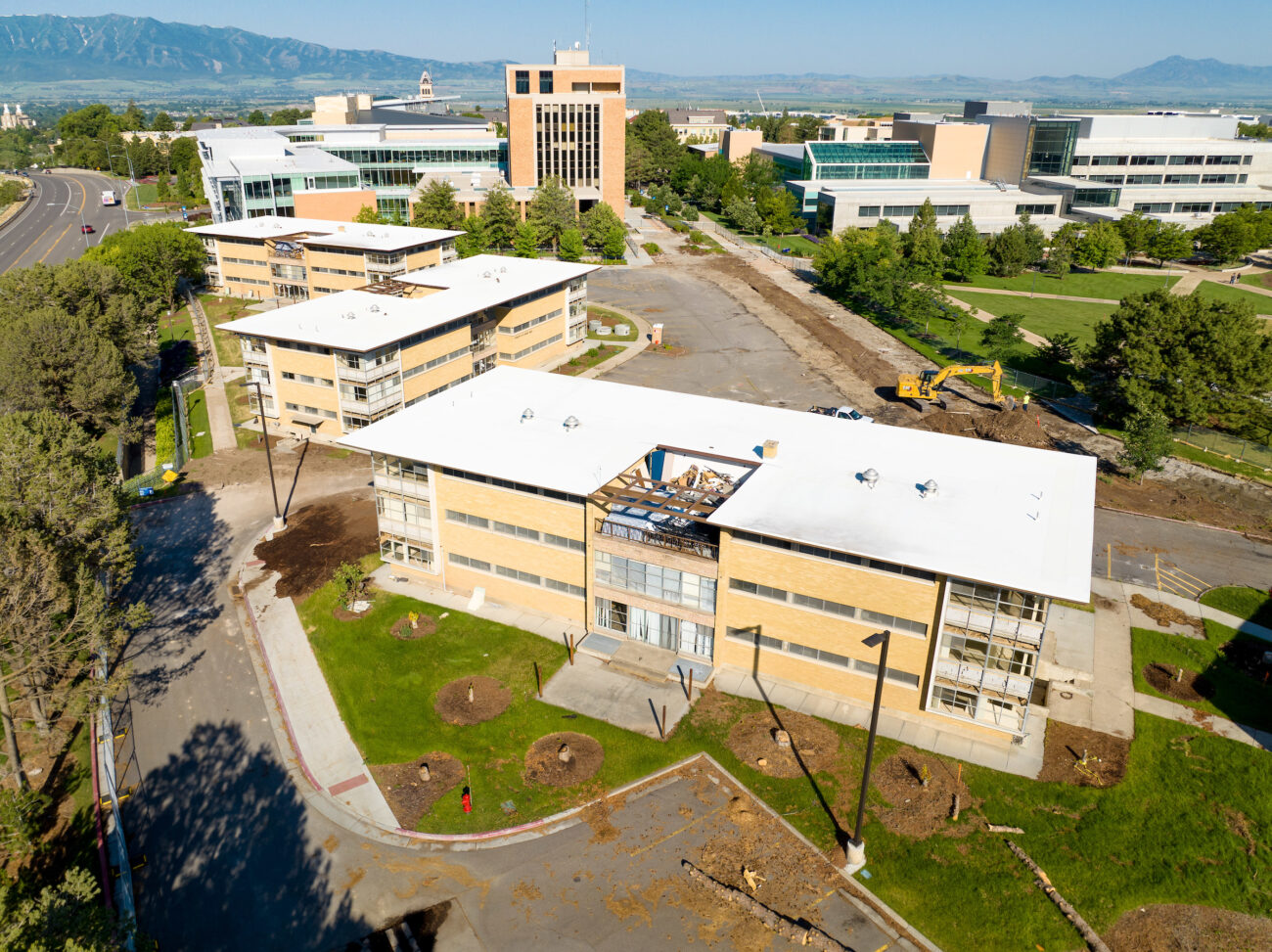Expect Delays: How Global Supply Chains Got So Messed Up

In the early days of COVID-19, homebound Americans descended upon stores, scooping up what remained of flour, yeast, and toilet paper supplies.
Two years later, ripple effects from the pandemic continue to plague businesses. While shortages have shifted to building supplies and computer chips, for weeks last fall container ships were stalled at sea, laden with goods but nowhere to unload them. The pandemic disrupted business as usual, revealing the fragility of global supply chains. Vijay R. Kannan, the Vernon and MaRee Buehler Endowed Professor in the Jon M. Huntsman School of Business and a supply chain expert, explains how to build resiliency into the system.
You have studied supply chain management since the mid-1990s. Have you seen anything like what we’ve experienced the last two years?
No, this is unique. Supply chain disruptions happen all the time because of events like hurricanes and labor strikes. Typically, these disruptions tend to be somewhat localized geographically and to affect either supply or demand. This is the mother of all disruptions. Not only do we have demand impact and all these supply issues, it is everywhere at the same time.
What are the major sources of delays, and have they changed since the start of the pandemic?
If you think back to 2020, there was a sudden shutdown, and some industries like hotels, airlines, and rental car companies went off a cliff in terms of demand, while other industries like household cleaning products, fitness equipment, and home office equipment had demand go through the roof. And demand also shifted. Items packaged for organizational consumption were now needed at the home and retail level, so there were mismatches between product availability and where the demand was.
But why are we experiencing them almost two years later?
There is a phenomenon in the supply chain world called the bullwhip effect. Imagine a whip in your hand. Even if your hand only moves a little, at the end of the whip you tend to see a lot more movement. And it takes time for that energy to flow to the end of the whip. But if you look at the whip, it has waves that get bigger as you go further back. That is what we are seeing right now. Changes in demand have ripple effects that get amplified throughout the supply chain as organizations try to protect themselves against uncertainty. And these supply chains may have 10 or more levels. Now throw in the logistics challenges. Shortages of shipping containers, capacity to unload inbound ships at ports, places to store inventory, and truck drivers to move goods mean additional product delays. And these are also driving up prices, which only adds to demand volatility.
How long is it going to take to go back to normal?
A lot of what I am seeing and reading is it might take to the end of 2022, perhaps longer.
Can you give an example that illustrates the problem?
Car rental companies. Many got rid of their fleets to pay down debts. For months there was no demand; then as vaccines became available people wanted to travel again. We saw rental prices of $500 a day in some places because there were no cars. And why are there no cars? Car makers cut production because there was no demand. When it did reappear, they ramped up production but didn’t have some major parts, particularly the electronics. And why not? Semiconductor producers downsized capacity because there was no demand. Then they saw major increases in demand in different sectors, but didn’t have the capacity to meet it. Eventually this will settle down, but it takes time and investment for companies to increase production in terms of labor, materials, and physical infrastructure, so there is this delayed effect.
In August, retail giants like Target and Walmart invested in private ships to bypass clogged ports. Are we moving to a new type of supply chain management where being nimble is more valued?
When we talk about supply chains being super optimized, what we are talking about is optimization around cost. And that has made companies less agile or resilient. The current challenges could cause organizations to be a little more thoughtful, intentional, and future-focused about the design of supply chains.
By Kristen Munson
Moving forward, what do we need to do to add safeguards to supply chains?
Don’t focus so much on cost. This is a tough one for many consumers, but companies should reconsider producing largely in stereotypically low-cost parts of the world. There is a tendency to focus on China, but organizations have chosen to produce there to take advantage of cost efficiencies that benefit consumers. Since the late 1970s, China has focused on building supply chain infrastructure to promote domestic economic development. Nowadays, however, the cost differentials of production, labor, real estate, and shipping have shrunk, making China less attractive in relative terms than other locations but not unattractive.
Don’t have all of your eggs in one basket. Diversify your locational risk.
Organizations should develop sourcing options and supply chain infrastructure in different locations that can provide the level of quality, expertise, and responsiveness needed. For example, don’t produce everything in southeast Asia if there are locations closer to the markets being served where you have shorter lead times.
Map your entire supply chain.
One problem highlighted by COVID but not a COVID issue is the lack of transparency in supply chains. Most organizations don’t have end-to-end visibility of who the players are and what the pinch points may be, so they are not in a position to react if things go south. Supply chain mapping means you have a complete schematic understanding of the entirety of the supply chain and run sensitivity analyses to identify the need for countermeasures in response to risk factors. When things are running smoothly we don’t always consider, What if something went wrong? We need to change our thinking to, If it becomes a problem, are you ready to respond?





